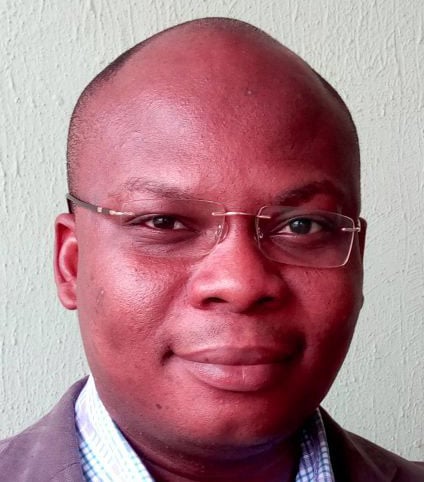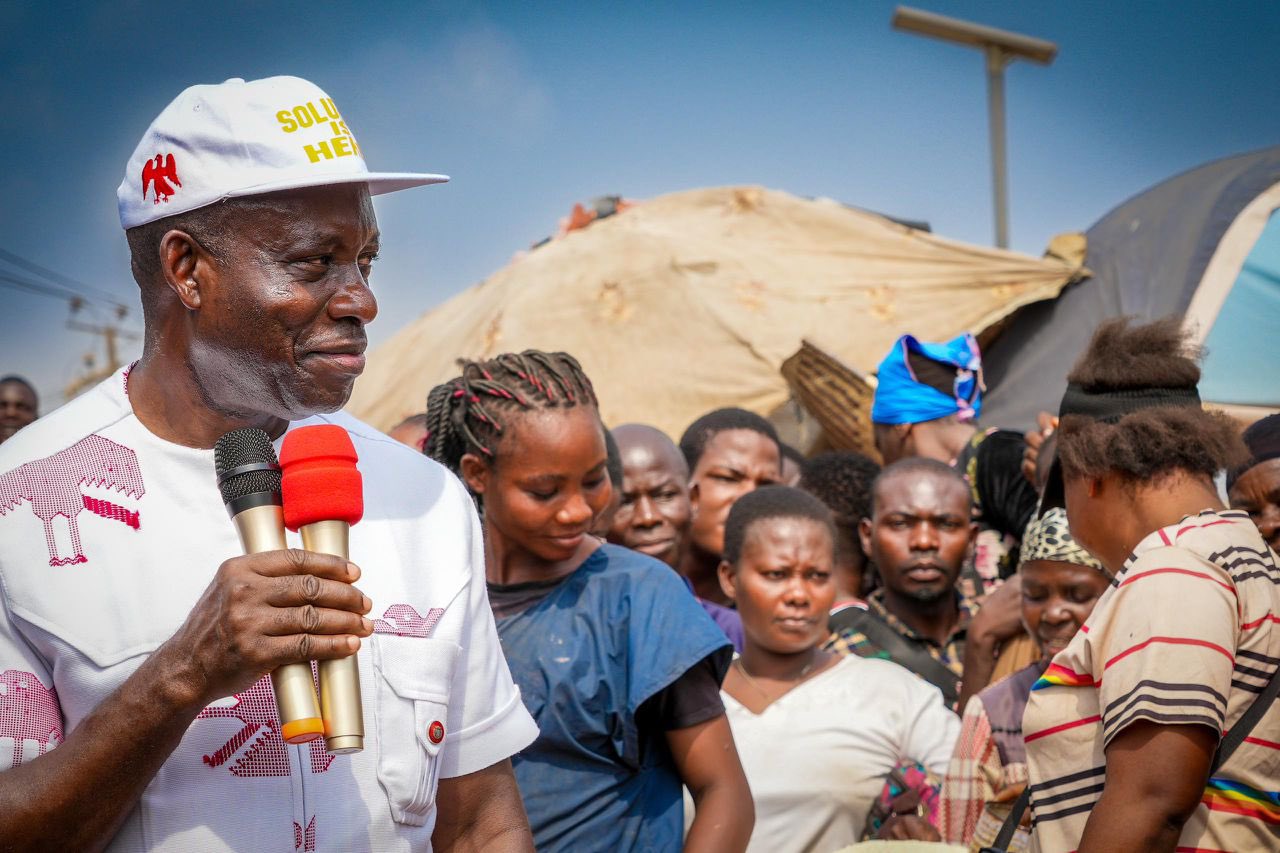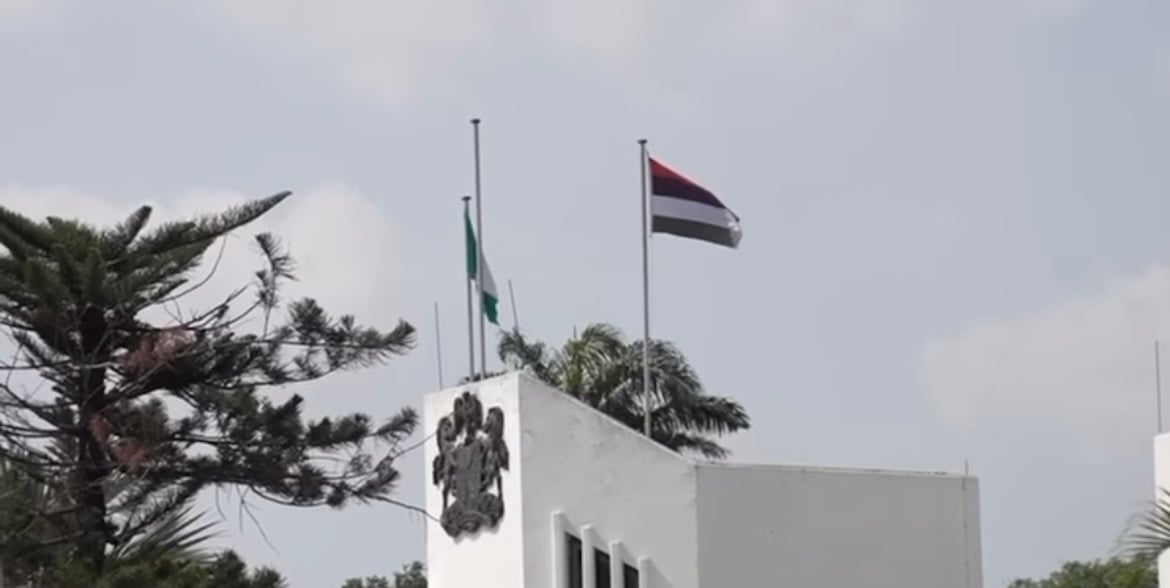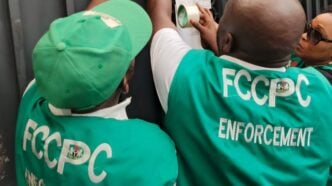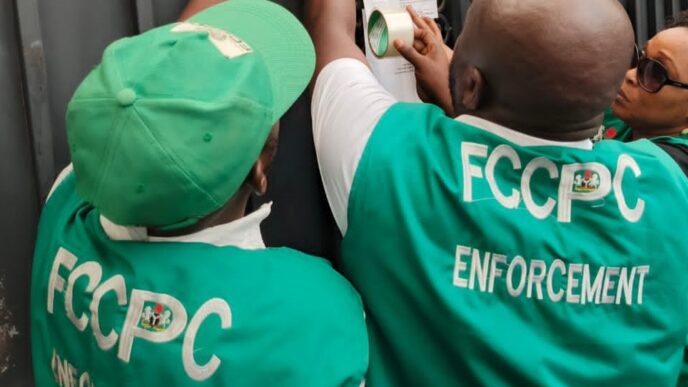Soludo (with mic) | File photo
Documents from the World Bank’s archive show that the Bank approved a $67.0 million (equivalent to N36.8 million in 1981) loan for Nigeria in 1981 for the rehabilitation of the 1960 water supply scheme in Onitsha, which suffered significant deterioration during the Nigerian Civil War and was not meeting the needs of residents of Onitsha. The total water scheme project was estimated at N66.3 million (which was equivalent to $120.6 million using 1981 exchange rate). The $67 million World Bank loan, at that time, was to cover the foreign currency component of the project which was 55% of total cost.
The 1981 project financing scheme required that the counterpart costs would be met through contributions of $ 48.1 million (N26.5 million as at 1981) by the then Anambra State Government and $5.5 million (N3 million) by Anambra State Water Corporation (ASWC) which was supposed to charge for water usage. Interestingly, the World Bank’s 1991 project completion report for the Onitsha Water Scheme shows that its $67 million loan to Nigeria was closed in July 1991 and an unutilized balance of $2,655.22 was canceled in September 1991. Interested readers could visit the following link for details of this project: https://documents1.worldbank.org/curated/en/605701468290135155/pdf/multi-page.pdf and https://documents1.worldbank.org/curated/en/906611468098982882/pdf/multi-page.pdf
Despite the anticipated impact of this water project to the long-term sustainability of Onitsha, many adults in Onitsha cannot remember when they enjoyed public water supply in Onitsha. The story of how Nigeria accrued external debts – which it got ‘debt relief’ from during the President Obasanjo’s administration – is better left for another day. And before the advent of Governor Chukwuma Soludo, some of the lands these projects sat on were not only encroached upon, most of the equipment installed in these projects had been stollen and vandalized.
In 1979, before the commencement of the rehabilitation of the Onitsha Water Scheme project, the World Bank had approved the sum of $415,000 for the feasibility and engineering studies of the Greater Onitsha Water Scheme. During the same period, a consortium of Nigerian – German consultants (ENPLAN -GKW) carried out engineering designs for the master plan for sewerage, storm water and solid waste disposal schemes for Onitsha.
Advertisement
Today, the abandoned World Bank water scheme in Onitsha has a new life and the contractors handling the 3 major water schemes in the city are currently carrying out ‘final test running’ of the facilities and reticulation works. The facilities now produce highly treated portable water. And because reticulated pipes to homes of the 80’s have been severely damaged, contractors are working round the clock to restore these pipes. It is a very difficult job. Many residents have even built on the right of way of these water reticulation pipes and some have been stolen. Luckily, through sheer hard work and ingenuity, water has been reticulated to many commercial fetching points in Onitsha markets, civic centers and townhalls.
The Governor Chukwuma Soludo led administration has successfully rehabilitated the GRA Onitsha Water Scheme, CLASH Program Water Scheme and Terminal Reservoir Water Scheme. These water facilities have the capacity to supply 45 million litres of well-treated water to residents of Onitsha per day.
There have been efforts to rehabilitate these water schemes in the past. In November 2013, the state government announced that a 1.8-billion-naira contract to rehabilitate the Onitsha Water Scheme would be completed in 2014 by Peterson Candy International of South Africa. But the scale of deterioration of this water scheme was a big impediment to the project taking off. The infrastructure at the original intake water source at the Nkisi River for the water schemes had been seriously deteriorated and many big developments – including investments from institutional investors – had built on the right of way of the large raw water pipes taking water from Nkisi River to these treatment plants.
Advertisement
Today, the rehabilitated 45 million liters installed water treatment facilities in Onitsha is now powered with solar energy and with electricity from the national grid. The solar energy component of this facility is part of its sustainability and running cost reduction plan. The superb engineering design provided for this rehabilitated facility was able to have large industrial pumps powered by solar energy.
Last week, the joy of some residents of Onitsha knew no bounds when they received the State Commissioner for Power and Water Resources, Engr. Julius Chukwuemeka, during his routine inspection tour to monitor the reticulation of water to different fetching points in Onitsha, particularly at the Ogbe Oye Market, Inland Town.
There are ample reasons to be excited with the scale of work that has been done by the Governor Soludo-led administration. During the test running of the installed reticulation works in Onitsha by the project contractors, water runs for some hours daily at fetching points. Here is the grand plan: after the current test running of this project is completed, people at dedicated fetching points would be sure of a 24-hour water supply. The next phase would be to get water into individual houses.
During Engr. Julius Chukwuemeka’s inspection tour on a fetching point at Ogbe Oye Market, one woman lamented how her children had suffered from waterborne diseases in the past because of the unavailability of constant pipe borne water and that she spent a large portion of her earnings buying water in jerrycans from water vendors that she was not sure of their source of water. But, today, this woman is overjoyed!
Advertisement
The future of Anambra is bright with Governor Soludo at the helm of affairs. The Onitsha Water Scheme which seemed like a hard nut to crack has now been fully resuscitated and the last mile connections to residents are ongoing.
Nwankwo is the special adviser to Soludo on special projects.
Views expressed by contributors are strictly personal and not of TheCable.
